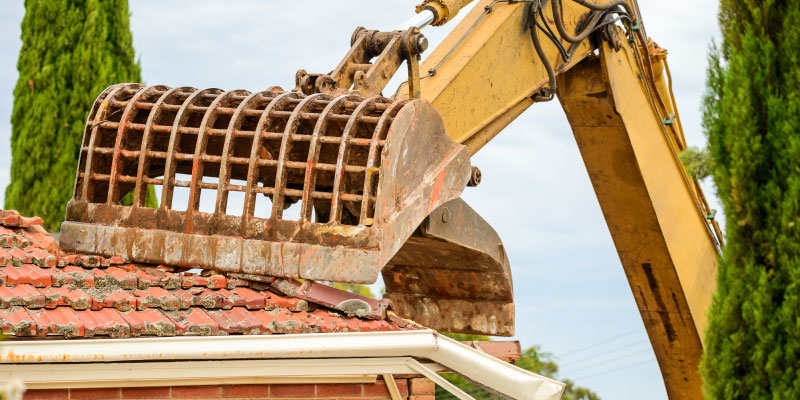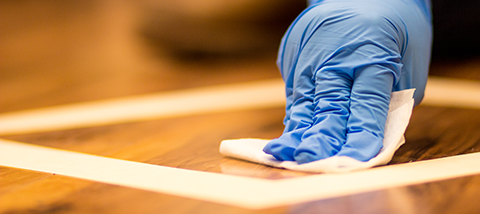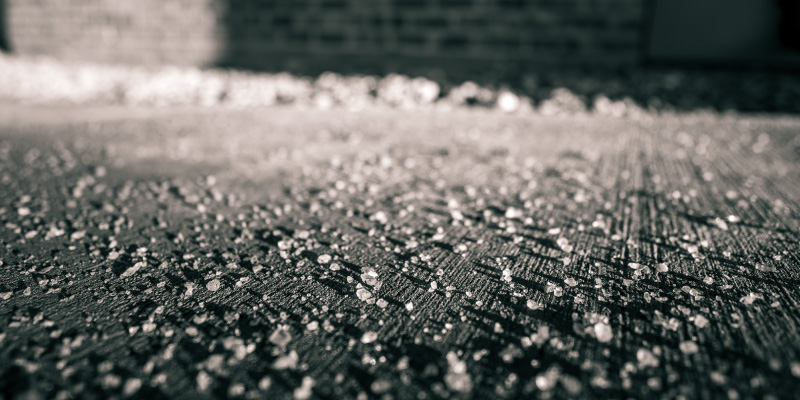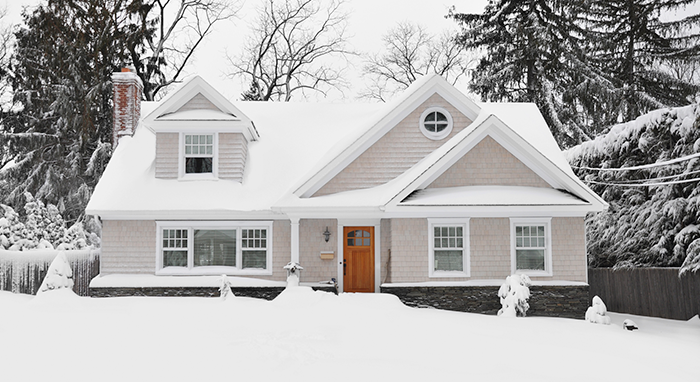
Updated November 16, 2021
Buying a house is most people’s biggest investment, so it only makes sense that you take the time to protect it.
This includes taking the necessary steps to get it ready for changing seasons.
Fall is a great time to start thinking about your home maintenance plan and how to get it ready for colder weather.
Below are a few things you can do to get ready for the colder months and keep your home working and looking as it should.
Jump to:
- Clean the chimney and fireplace
- Inspect the home's HVAC system
- Clean out the gutters
- Caulk, paint, and seal exterior wood
- Check on the health of your trees
- Close the sprinkler, pool system, and outdoor lines
- Make sure drainage is adequate
- Prepare your lawn for freezing temperatures
- Get ready for snow removal
Clean the chimney and fireplace.
Before you light your first fire of the season, be sure to have your chimney and fireplace cleaned and inspected.
A qualified chimney specialist will ensure the fireplace and chimney are safe to use.
They also can help identify maintenance problems.
Make sure you have fresh firewood for the cold months ahead and that any old, rotten firewood is removed.
Learn more about chimney repair and removal:
- Is Your Chimney Ready for the Fall and Winter Months?
- Find the Right Chimney Repair or Removal Contractor
- How Much Does Chimney Repair and Removal Cost?
Inspect the home’s HVAC system.
Generally speaking, HVAC systems last around 15 years.
They can kick the bucket sooner or later than that depending on how well they are maintained.
Take this time to change your filters and have your system inspected by a qualified HVAC technician.
Ideally, sign up for an annual maintenance program to ensure your system is always operating at its best.
Test your smoke and carbon monoxide detectors.
House fires are most common during winter months because we use our furnaces and fireplaces in addition to our stoves/ovens.
Because our homes are generally more closed-up as well, carbon monoxide is a bigger hazard.
Confirm all your carbon monoxide detectors and smoke detectors are working properly and have fresh batteries leading into the colder months. If you don’t have the proper detectors, reach out to your local fire department; they may have a program that provides residents with free detectors and fire safety advice.
As previously mentioned, getting your HVAC system inspected will also ensure your furnace and water heater—the most common sources of carbon monoxide—are properly vented.
Clean out the gutters.
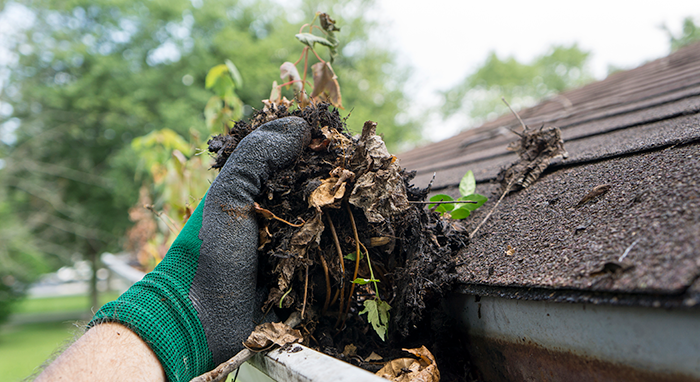
Once trees are done shedding most of their leaves, it’s time to clean out the gutters.
If gutters are allowed to back up, they can overflow down the home’s exterior, deteriorating your foundation, and potentially settling under surrounding concrete.
Caulk, paint, and seal any exterior wood.
The best way to prevent trim and other exterior wood from rotting is to keep it sealed, caulked, and/or painted.
This will help to protect it from the elements and is generally a job you can do yourself.
If the wood has had the chance to rot, it should be replaced by someone experienced in the work.
To avoid this, take the time to inspect your home’s exterior to make sure there is no cracking caulk or chipping paint.
If it is, scrape it away and apply a new coat.
Similarly, check your deck to make sure it is still repelling water.
You can check this by pouring some water on it and seeing if the water beads up.
If it doesn’t, it’s time to clean and reseal your deck.
Learn more about keeping exterior wood nice:
- Can You Recognize the 7 Signs of a Failing Deck?
- How to Restore a Wood Deck
- How Much Does It Cost to Replace a Wood Fence?
- How to Remove Rotting Deck Boards
- How to (Easily) Remove a Fence Post with Concrete Footing
Check on the health of your trees.
If you have dead trees or tree limbs on your property, it’s best to trim those before snow is allowed to pile up on them.
Branches can droop, scraping up against your roof or siding, or they could fall on your home altogether.
Avoid this by trimming wherever necessary. If limbs are high up or you have any doubts about your ability to safely do the job, hire a professional tree trimmer.
Close the pool, sprinkler system, and outdoor lines.
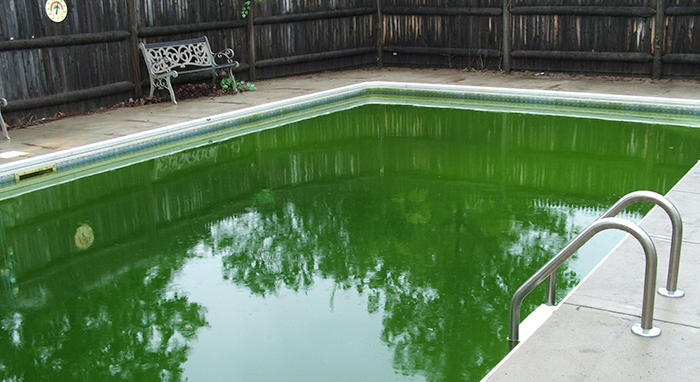
If you have a pool or sprinkler system, make sure they are emptied or shut down properly for winter.
Fall is a great time to repair or even remove your pool if it’s just sitting there unused.
Sprinkler systems should also be properly shut down for the fall and winter seasons.
This generally means blowing out the lines.
We always recommend hiring a professional to handle the work so that you don’t have to worry about anything going wrong or paying to replace things.
If your pool has sat unused for several seasons, or it's old and beyond repair, considering removing it.
Learn more:
- Is Your Pool Ready for Fall and Winter?
- Benefits of Removing a Swimming Pool: Why It's an Option Worth Considering
- Swimming Pool Removal FAQs: Quick Answers to Common Questions
- Pool Removal Cost Comparison: Partial vs Complete
Make sure drainage is adequate.
While doing your exterior house check, be sure to check the soil around the home's foundation to see if it has settled.
If you do find a low spot, fill it in with soil.
Check your gutter downspouts to ensure water is moving away from the home as needed so that water is not allowed to sit around your foundation and freeze when it gets cold.
Prepare your lawn for freezing temperatures.
Preparing your lawn in the fall is key to a beautiful lawn in the spring.
To encourage growth in Northern states or areas that do experience cooler winters, aerate your lawn and over-seed it around late September.
Then, in November, apply a fertilizer and winterizer to your lawn.
Get ready for snow removal.
Do a quick inventory of your snow removal gear.
Make sure...
- You have a scraper in each vehicle.
- You know where your shovels are.
- You have salt for your driveway and walkways.
- Your snowblower is ready to go.
Similarly, make sure you understand the best ways to manage snow this year without damaging your driveway, sidewalks, etc.
Keep reading:
